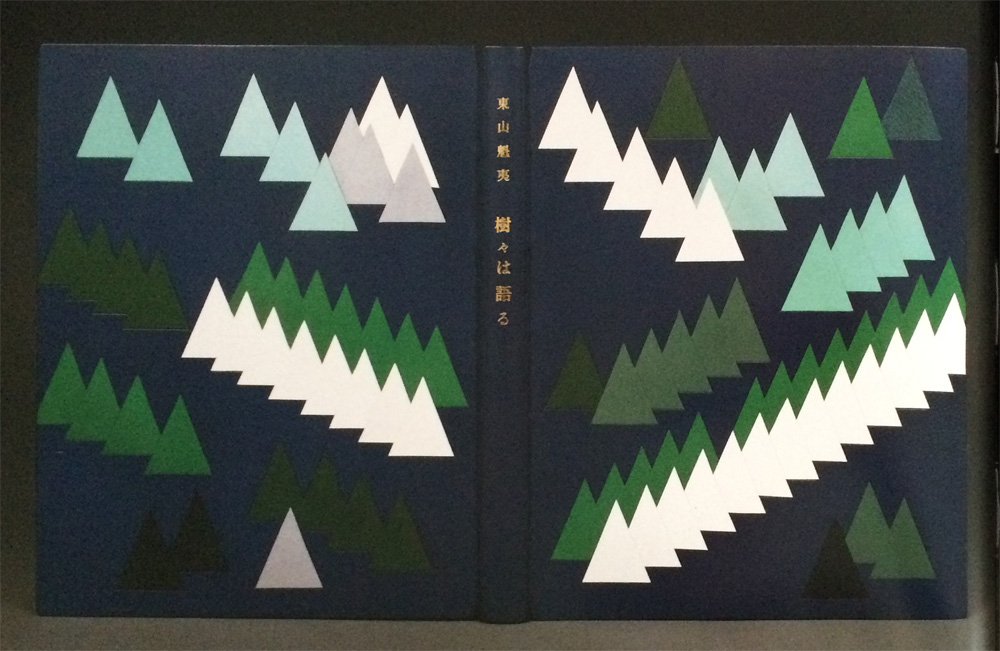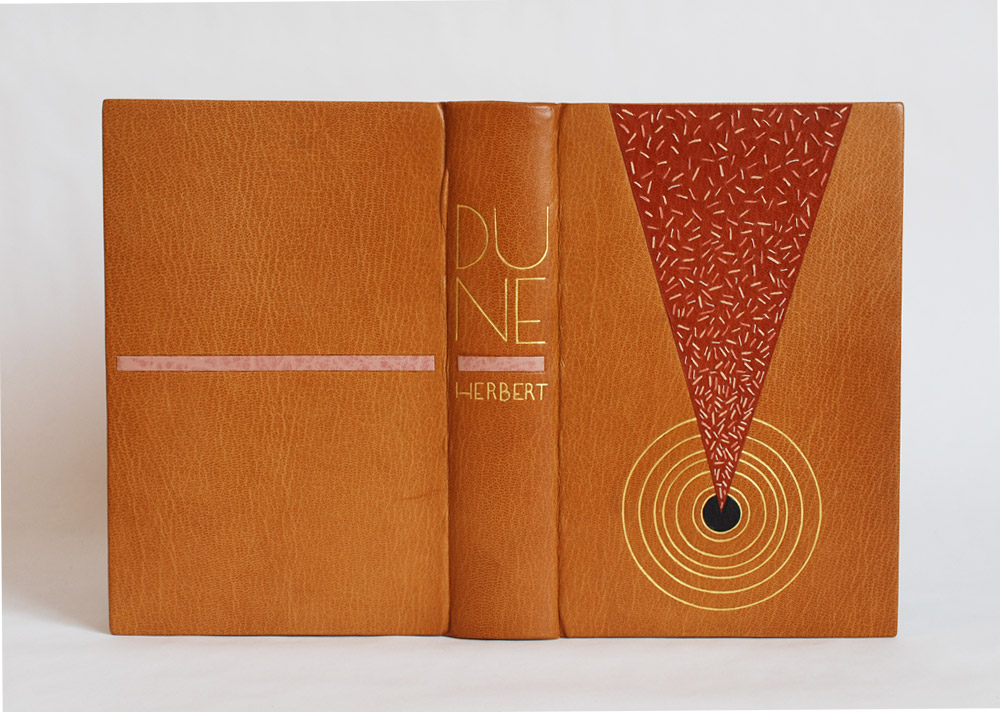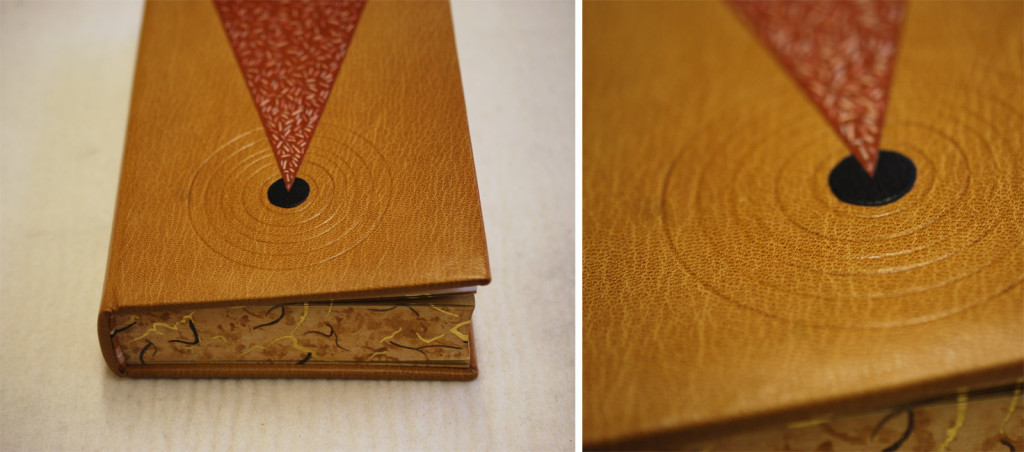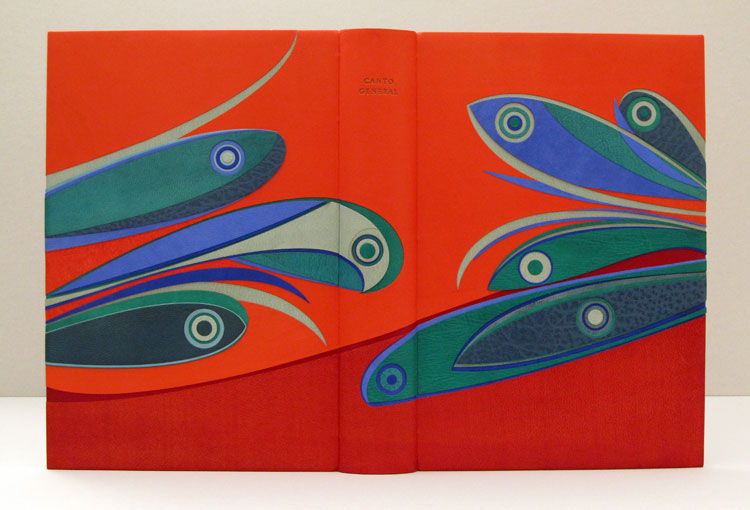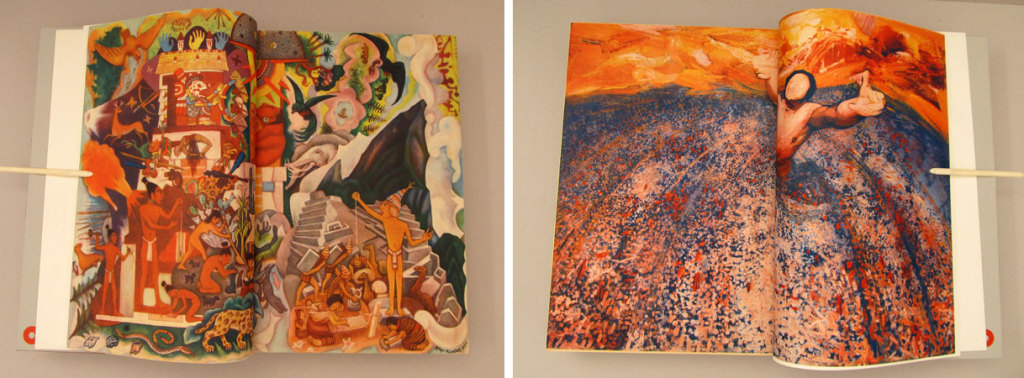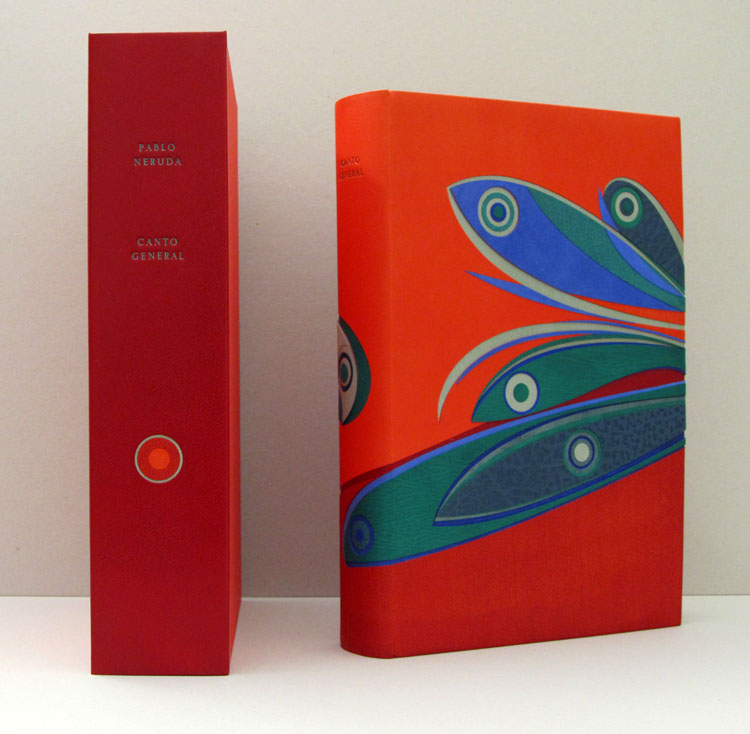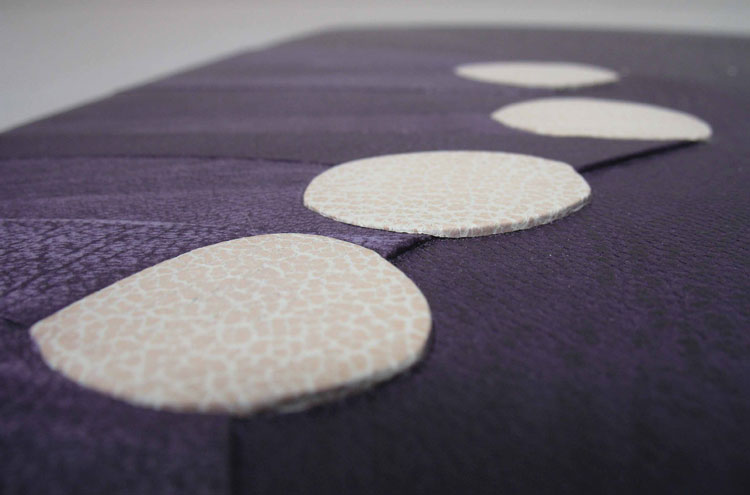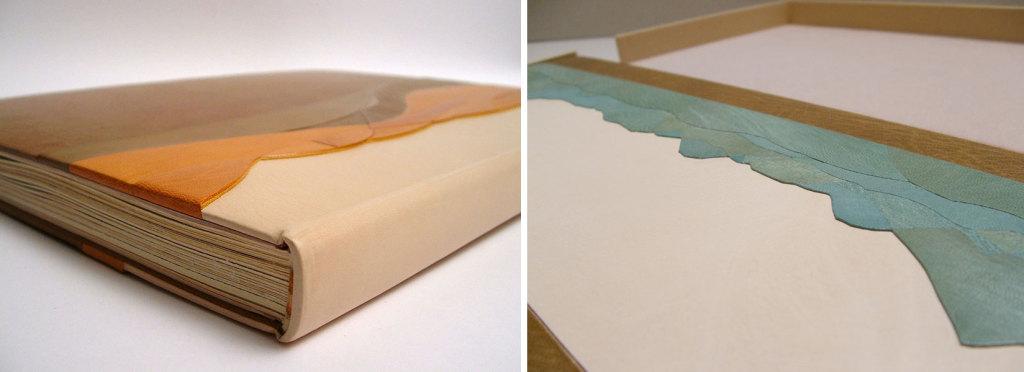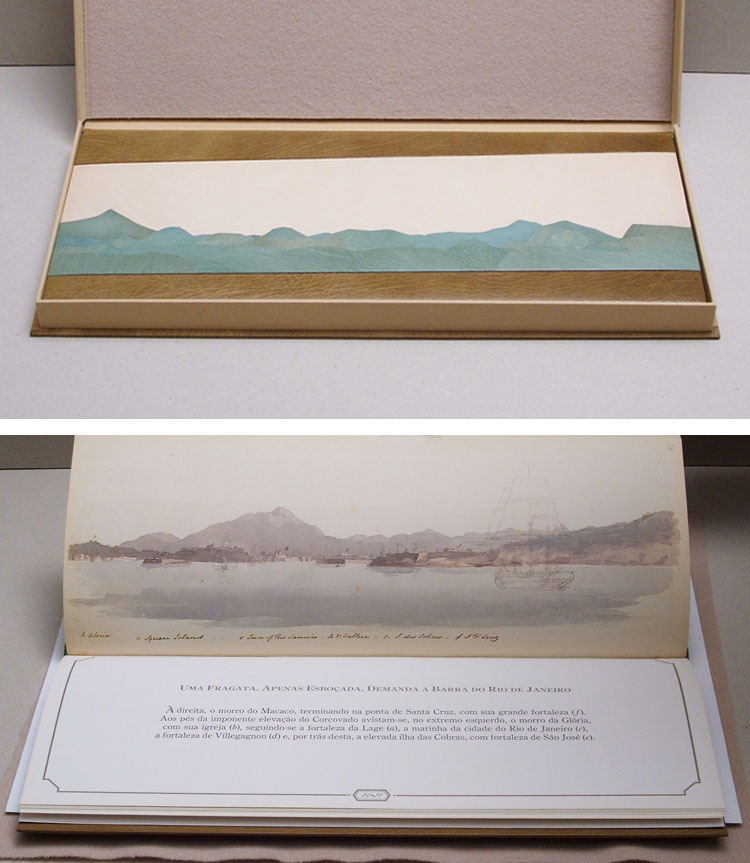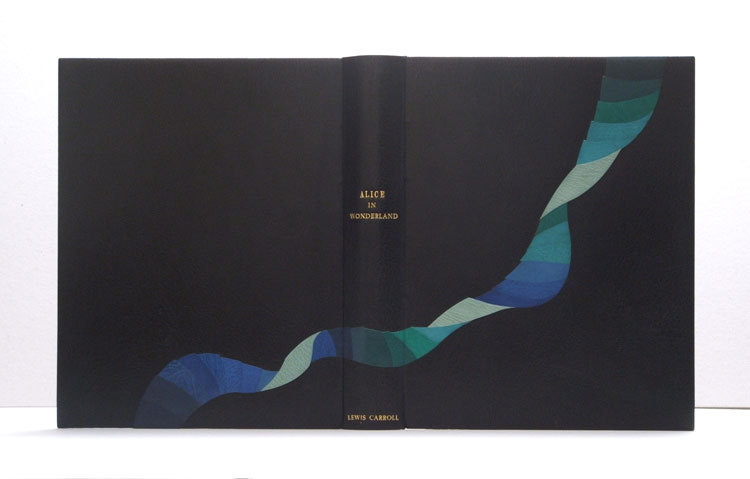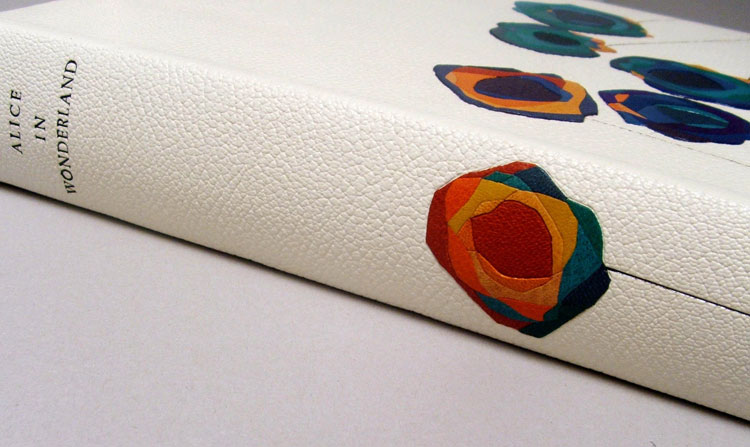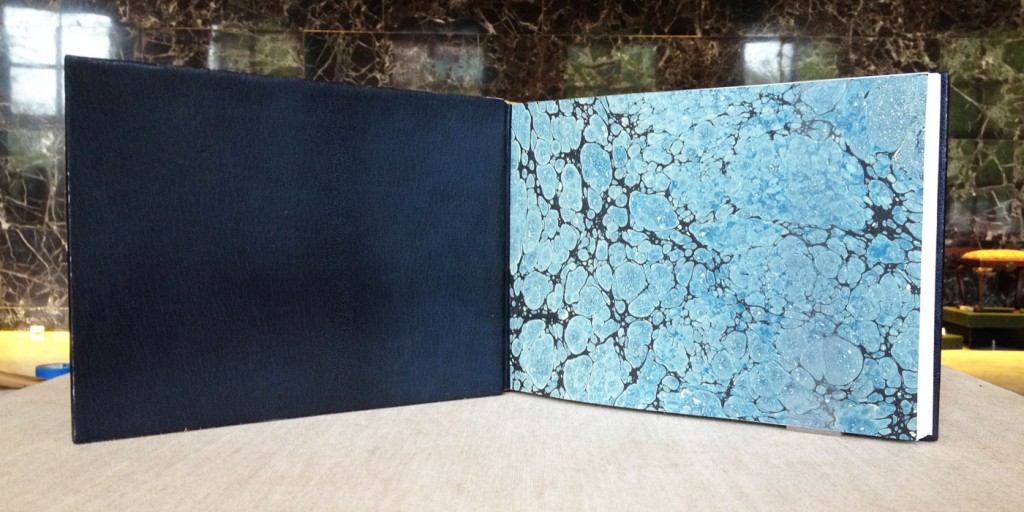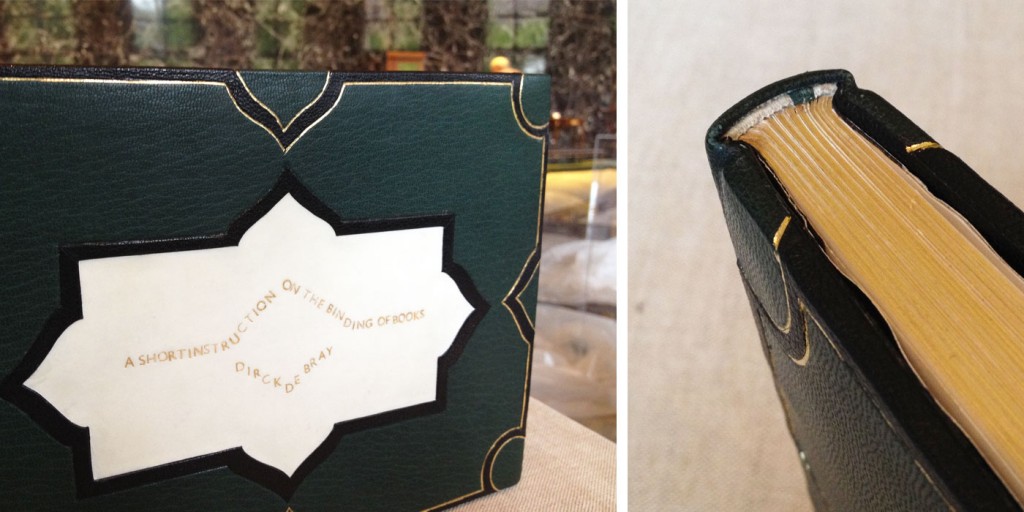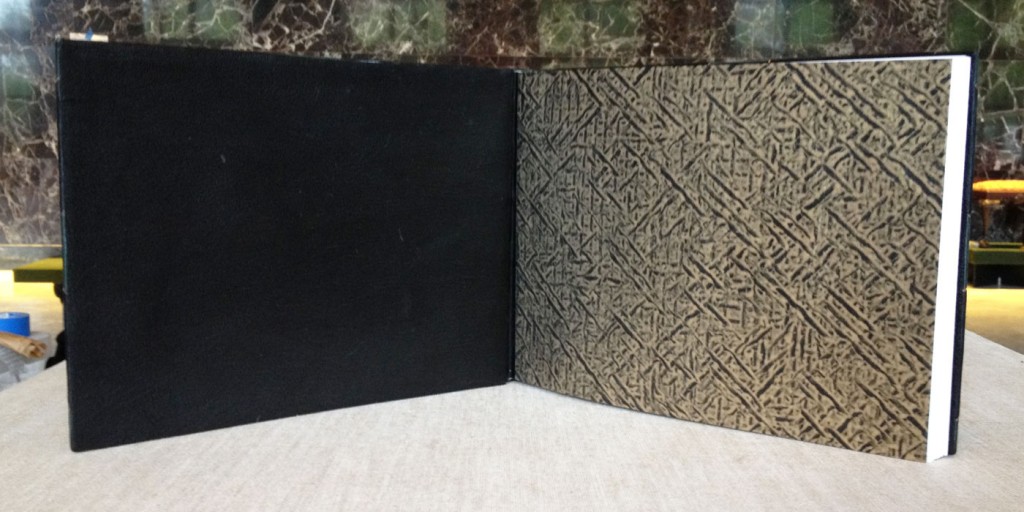Trees Talk includes the work of Kaii Higashiyama, a highly respected painter in Japan whose work captures the spirit of the four seasons. The reproductions in this book are a collection of trees paired with poetry reflecting the words spoken by the trees.
In 1985, Tini Miura bound an impressive 23 editions of Trees Talk in full leather decorative bindings.
The designs are a mix of geometric patterns to more organic shapes, but the color palette is limited to shades of blue and green with pops of pink and neutrals such as white, gray and black. Was it challenging to reinterpret a set of work 23 different ways? Was the assembly done like an edition or did you work on each binding separately?
This edition is showing the work of Kaii Higashiyame, the most famous Japanese artist when I arrived. The main colors used for this book’s illustrations by the artist were: blues, greens, white on every page. I followed the feeling of these images by mainly using his color range.
I bound the book during a 4-month period, from book block preparation until covering and another 5 months for the execution of the design.
I often hear: oh, I can tell your designs are influenced by Japanese art. My professor in Paris complained that my colors were too sad, I had guests who came to my slide shows leave, shaking their heads: too colorful.
My color choice always has to do with the content (in my mind ) colors in Scandinavia are mainly: blue, green, white, grey, violet….usually the literary themes there are not the same as in Spain for example. Colors in the North of Europe are different than those in the Mediterranean region, so are the feelings evoked by colors.





